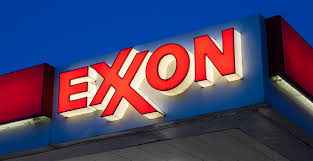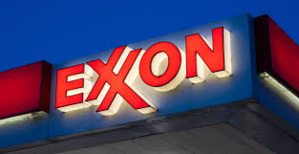With the Covid-19 pandemic drastically bringing down global energy prices, a historic annual loss for 2020 was reported by Exxon Mobil Corp which brought down the market value of the shale gas properties of the company was slashed by more than $20 billion.
A reduction of almost one third in the company’s spending on new projects was announced by Exxon last year while it also brought to light its plan to reduce its global workforce by 15 per cent. It has also announced addition of $21 billion to its debt to finance its losses throughout the year as well as its restructuring plans.
The changes come amid “the most challenging market conditions Exxon has ever experienced,” said Chief Executive Darren Woods, and added that the company will reduce costs by $6 billion a year compared to the 2019 levels over time.
Compared with a full-year profit of $14.34 billion in 2019, Exxon posted a net loss of $22.4 billion for the entire of 2020 because of the writedown and losses in oil production and refining.
While the company did not say anything on whether it had even made an annual loss, since Exxon merged with Mobil in 1999 and through the oil bust of the 1980s the company had regularly made annual profits.
Environmentalists and activist investors who are demanding an overhaul and the company’s strategy to ensure a shift of business from fossil fuel to cleaner energy sources have kept Exxon under pressure.
However by naming the former head of Malaysia’s state oil company, Tan Sri Wan Zulkiflee Wan Ariffin, to its board, the company effectively pushed back against the demand from environmentalists and activist investors of transition to clean energy.
There was a huge reduction in demand for fuel during the pandemic because of restrictions in movement and travel which pushed other oil majors to post losses for the year as they were also forced to make huge writedowns.
Annual losses for 2020 were reported by rivals BP Plc and Chevron Corp.
In the fourth-quarter ended December 31, Exxon reported a net loss of $20.2 billion, or $4.70 per share, compared to a profit of $5.69 billion, or $1.33 per share, for the same quarter a year ago. The earnings of the company came in at 3 cents per share, excluding the impairment and other charges, which neat average expectation of analysts of the company making one-cent gain, as per data from Refinitiv IBES.
“The turnaround story will take some time,” said Biraj Borkhataria, analyst with RBC Capital Markets. Its dividend and capital spending is not yet being covered by the company with cash from operations, he added.
Woods said that it would be possible for Exxon to begin to cover dividend and start to repay the $68 billion in debt on its balance sheet with the recovery of oil prices globally.
Mark Stoeckle, senior portfolio manager at Adams Funds said that Exxon still has “plenty of wood to chop” but investors will like the idea of cutting down costs to pay dividend.
(Source:www.news18.com)
A reduction of almost one third in the company’s spending on new projects was announced by Exxon last year while it also brought to light its plan to reduce its global workforce by 15 per cent. It has also announced addition of $21 billion to its debt to finance its losses throughout the year as well as its restructuring plans.
The changes come amid “the most challenging market conditions Exxon has ever experienced,” said Chief Executive Darren Woods, and added that the company will reduce costs by $6 billion a year compared to the 2019 levels over time.
Compared with a full-year profit of $14.34 billion in 2019, Exxon posted a net loss of $22.4 billion for the entire of 2020 because of the writedown and losses in oil production and refining.
While the company did not say anything on whether it had even made an annual loss, since Exxon merged with Mobil in 1999 and through the oil bust of the 1980s the company had regularly made annual profits.
Environmentalists and activist investors who are demanding an overhaul and the company’s strategy to ensure a shift of business from fossil fuel to cleaner energy sources have kept Exxon under pressure.
However by naming the former head of Malaysia’s state oil company, Tan Sri Wan Zulkiflee Wan Ariffin, to its board, the company effectively pushed back against the demand from environmentalists and activist investors of transition to clean energy.
There was a huge reduction in demand for fuel during the pandemic because of restrictions in movement and travel which pushed other oil majors to post losses for the year as they were also forced to make huge writedowns.
Annual losses for 2020 were reported by rivals BP Plc and Chevron Corp.
In the fourth-quarter ended December 31, Exxon reported a net loss of $20.2 billion, or $4.70 per share, compared to a profit of $5.69 billion, or $1.33 per share, for the same quarter a year ago. The earnings of the company came in at 3 cents per share, excluding the impairment and other charges, which neat average expectation of analysts of the company making one-cent gain, as per data from Refinitiv IBES.
“The turnaround story will take some time,” said Biraj Borkhataria, analyst with RBC Capital Markets. Its dividend and capital spending is not yet being covered by the company with cash from operations, he added.
Woods said that it would be possible for Exxon to begin to cover dividend and start to repay the $68 billion in debt on its balance sheet with the recovery of oil prices globally.
Mark Stoeckle, senior portfolio manager at Adams Funds said that Exxon still has “plenty of wood to chop” but investors will like the idea of cutting down costs to pay dividend.
(Source:www.news18.com)






